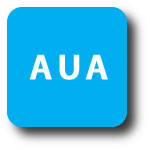ORLANDO, FL USA (UroToday.com) - Recent experience managing patients with small renal masses on active surveillance has made apparent the need for improved predictors of progression and cross over to intervention. Continuing in their pioneering work evaluating the RENAL Nephrometry score, the group from of Fox Chase Cancer Center (Philadelphia, PA) conducted a study investigating whether tumor anatomic complexity is a useful measure in evaluating patients on active surveillance. Dr. Reza Mehrazin presented their findings.
 This study was retrospective in nature and involved identifying patients from their institution’s renal mass database. Patients were included if they had an enhancing renal mass that was managed expectantly for at least 6 months between 2000 and 2012. Patients with hereditary disease or biopsy-proven non-renal cell lesions were excluded. In total, 381 patients with 395 tumors were identified. Their mean follow up was nearly 33 months, and 46% of patients ultimately received definitive intervention after an average of 23 months. Between patients who remained on active surveillance and those who progressed to intervention, differences were seen in age, Charlson co-morbidity score, and LGR. The quantified RENAL Nephrometry score was not different between groups, but when looking at components of the score, they demonstrated that those tumors that were closer to the collecting system, or were hilar, were more likely to progress to surgical intervention. Their adjusted model demonstrated that " for each 1 point increase in Nephrometry score sum, average tumor LGR increased by 0.036 cm/year (p=0.010). Of the entire cohort, 6 patients (1.6%) progressed to metastatic disease."
This study was retrospective in nature and involved identifying patients from their institution’s renal mass database. Patients were included if they had an enhancing renal mass that was managed expectantly for at least 6 months between 2000 and 2012. Patients with hereditary disease or biopsy-proven non-renal cell lesions were excluded. In total, 381 patients with 395 tumors were identified. Their mean follow up was nearly 33 months, and 46% of patients ultimately received definitive intervention after an average of 23 months. Between patients who remained on active surveillance and those who progressed to intervention, differences were seen in age, Charlson co-morbidity score, and LGR. The quantified RENAL Nephrometry score was not different between groups, but when looking at components of the score, they demonstrated that those tumors that were closer to the collecting system, or were hilar, were more likely to progress to surgical intervention. Their adjusted model demonstrated that " for each 1 point increase in Nephrometry score sum, average tumor LGR increased by 0.036 cm/year (p=0.010). Of the entire cohort, 6 patients (1.6%) progressed to metastatic disease."
Their conclusion was that their experience is consistent with others with respect to the safety of AS in the elderly and comorbid, and that tumor complexity and linear growth rate may be useful in individualizing patient follow-up during AS based on radiology. It is unclear what mechanism governs the association between tumor linear growth rate and tumor complexity as defined by RENAL Nephrometry score. Additionally, it will be interesting to see how this can be used prospectively to direct management decisions regarding patients on AS. Despite these remaining questions, this work is clearly important in bolstering the ability to maintain patients safely on AS, and investigating potential instruments useful in the pursuit of this goal.
Presented by Reza Mehrazin, MD at the American Urological Association (AUA) Annual Meeting - May 16 - 21, 2014 - Orlando, Florida USA
Fox Chase Cancer Center, Philadelphia, PA USA
Written by Martin Hofmann, MD, University of California (Irvine), and medical writer for UroToday.com



